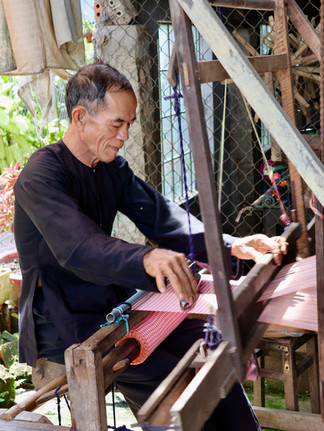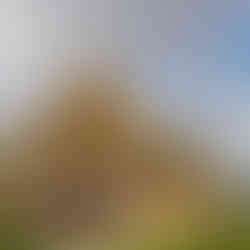Hello, Cambodia!
- sbcrosby .
- Nov 11, 2024
- 3 min read
Our last stop in Vietnam before following the river north to Cambodia was a morning visit via sampan boat to Long Khanh Island. We visited a local family of scarf weavers, and then we stopped at the home of a Viet Cong veteran. He recently passed away, but his son shared stories of his time during the war as both a farmer and soldier.
A note about the Vietnamese and how they handle death. First, they believe a "good death" is to die at home, surrounded by family. Funerals can often last several days to weeks, with the body prepared for viewing at home. They believe in the afterlife and that you must provide necessities for the deceased – food, clothing, shelter – to ensure a healthy life after death. They bury their dead in a sarcophagus, often nicer than the homes they live in, and they celebrate the anniversary of the death of a loved one with a large party each year.
We bid farewell to our Vietnam tour guides as we set course for Cambodia. While cruising, we enjoyed afternoon massages in the ship's spa and time poolside.
After sunset, we pulled into the harbor of Phnom Penh, Cambodia's capital city. After four days of experiencing rural life on the Mekong, this bustling, neon-lined skyline was quite the juxtaposition! What a beautiful, modern city – our anchor spot for the night.
Our Thursday morning began with a tuk-tuk tour of the city – tuk-tuks are a common form of urban transportation. We quickly stopped at the Independence Monument in Freedom Park, honoring King Norodom Sihanouk and commemorating Cambodia's Independence from France in 1953, for which Sihanouk played a significant role.
We then toured the Royal Palace, the home to the monarchy of Cambodia. The country is a constitutional monarchy with an elected parliamentary government, including an active prime minister. King Norodom Sihamoni is the reigning king and is the son of former King Sihanouk. During the coup of Pol Pot and the Khmer Rouge regime, the king and his family lived under house arrest at the palace.
Although it was another stifling hot day, we toured the grounds and a couple of the palace buildings. Near the entrance, we stopped to admire a massive cannonball tree with its beautifully unique blossoms. Our guide said the flowers are often associated with fertility, so much so that her mother insisted she drink the nectar from its ball-shaped fruit when hoping for a second grandchild. It tasted so awful she refused to drink it and said she was content with only one child!
Our last stop on the tour was the National Museum of Cambodia, known for the finest collection of Khmer sculpture from the 5th to 11th centuries. Khmer is the ancient Southeast Asian kingdom that ruled over the entire Mekong region from its capital at Angkor and reached its peak of power in the 11th century. It was destroyed fully by the 14th century.
The museum had an impressive collection of centuries-old artifacts made of bronze, stone, wood, and clay. Highlights include a massive eight-armed Vishnu statue from the 6th century. Vishnu is one of three significant Hindu gods responsible for the creation, preservation, and destruction of the world. Vishnu is the protector – responsible for the universe's preservation. There are also striking statues of Shiva (the Hindu god of destruction) from the 9th and 10th centuries.
Since we had free time in the afternoon, we hired a tuk-tuk driver and ventured out into the city. We stopped at several local specialty shops, including a pepper producer (where Mark and Bryan sampled and purchased a variety of peppercorns; they were popping these like candy – crazy). After seeing a fellow cruise mate return earlier to the ship with the coolest duffel made from recycled rice bags, we had to find them. And we did! We also found the most beautiful silk scarves with designs from leaves and flowers that are steamed and pressed, which then transfer the patterns and colors and permanently dyes them into the fabric.
Back on the ship, we were entertained by a group of young and talented Cambodian dancers. A most full and fulfilling first day in Cambodia.






















































Comments